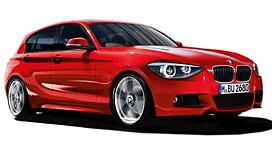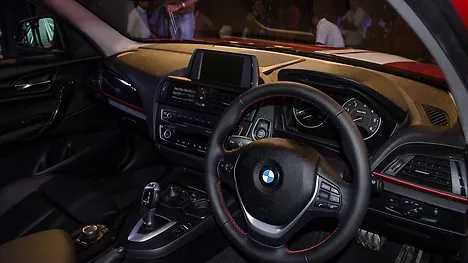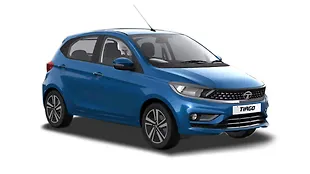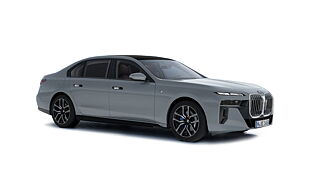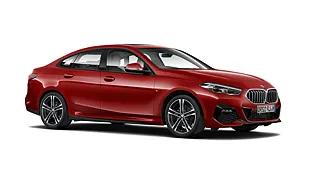Page-1

We recently had a chance to visit the BMW India facility, just outside of Chennai, where we got to witness their brand ambassador and global cricket legend, Sachin Tendulkar, assemble a section of a BMW 520d under their new localisation programme. Having reached there, we also did a small tour of the plant to find out just how the world’s best handling cars are assembled.
 1. The BMW India plant is located in Mahindra World City at Chengalpet near Chennai City and was opened on March 29, 2007. Spread out over an area of 47 acres, the plant produces the 1 Series, 3 Series, 5 Series, X1, X3, X5, certain models of the Mini and the 7 Series in the diesel variant. It supplies 95 per cent of all BMW cars sold in India.
1. The BMW India plant is located in Mahindra World City at Chengalpet near Chennai City and was opened on March 29, 2007. Spread out over an area of 47 acres, the plant produces the 1 Series, 3 Series, 5 Series, X1, X3, X5, certain models of the Mini and the 7 Series in the diesel variant. It supplies 95 per cent of all BMW cars sold in India. 2. We spoke with Robert Frittrang, MD of the Chennai plant, who told us that all the cars are assembled by hand by technicians that have been employed from technical institutes near the plant.
2. We spoke with Robert Frittrang, MD of the Chennai plant, who told us that all the cars are assembled by hand by technicians that have been employed from technical institutes near the plant. 3. He added that the level of automation was minimal as the highly technical nature of cars meant the benefits of human dexterity outweighed the advantages of automation. Apart from the high availability of technical hands, they also chose Tamil Nadu thanks to the easy access to port facilities.
3. He added that the level of automation was minimal as the highly technical nature of cars meant the benefits of human dexterity outweighed the advantages of automation. Apart from the high availability of technical hands, they also chose Tamil Nadu thanks to the easy access to port facilities. 4. The plant has two assembly lines and a total production capacity of 14,000 units annually. It works on the basis of demand and currently produces around 7,000 units. They are flexible to handle BMW’s traditional RWD models as well as their new generation FWD models.
4. The plant has two assembly lines and a total production capacity of 14,000 units annually. It works on the basis of demand and currently produces around 7,000 units. They are flexible to handle BMW’s traditional RWD models as well as their new generation FWD models. 5. In addition to assembling the cars, BMW also has facilities to rebuild damaged vehicles as well as perform quality checks in this regard.
5. In addition to assembling the cars, BMW also has facilities to rebuild damaged vehicles as well as perform quality checks in this regard.  6. The largest vehicle produced in terms of length is the 7 Series while the X5 takes this honour in terms of height. Each vehicle takes a total of 30 hours to go through the complete process of assembly and quality checks and finally being signed off for delivery. The CBU models are brought to the distribution centre and then sent to their destinations from there.
6. The largest vehicle produced in terms of length is the 7 Series while the X5 takes this honour in terms of height. Each vehicle takes a total of 30 hours to go through the complete process of assembly and quality checks and finally being signed off for delivery. The CBU models are brought to the distribution centre and then sent to their destinations from there. 7. The plant now assembles cars with up to 50 per cent localisation. It spent a majority of 2014 working in this direction and now has suppliers on site to provide it with localised components.
7. The plant now assembles cars with up to 50 per cent localisation. It spent a majority of 2014 working in this direction and now has suppliers on site to provide it with localised components. 8. One of the special features that Robert highlighted about the plant was that it was sourcing six per cent of its power requirements from solar energy. Installed by a Dutch firm, the plant gets around 150KW from sunlight and aims to double this number 450KW by the end of next year.
8. One of the special features that Robert highlighted about the plant was that it was sourcing six per cent of its power requirements from solar energy. Installed by a Dutch firm, the plant gets around 150KW from sunlight and aims to double this number 450KW by the end of next year.  9. The company does not have any R&D facilities in India but has an International Purchasing Office which is based out of Gurgaon.
9. The company does not have any R&D facilities in India but has an International Purchasing Office which is based out of Gurgaon. 10. In addition to the assembly plant and car distribution centre, the plant has also comprises facilities like a crèche and medical centre for the 550 personnel that work on site.
10. In addition to the assembly plant and car distribution centre, the plant has also comprises facilities like a crèche and medical centre for the 550 personnel that work on site. BMW has major plans for the Indian market and has invested Rs 4.9 billion as a part of its investment plans. Its effort to bring such a high level of localisation to a majority of its product line up in India means it sees volumes from the sub-continent. It aims to launch 15 new products in 2015 of which a lot are expected to be new variants of existing products. This means the plant will be busier than ever churning out cars for the Indian market.
BMW has major plans for the Indian market and has invested Rs 4.9 billion as a part of its investment plans. Its effort to bring such a high level of localisation to a majority of its product line up in India means it sees volumes from the sub-continent. It aims to launch 15 new products in 2015 of which a lot are expected to be new variants of existing products. This means the plant will be busier than ever churning out cars for the Indian market. On a personal note, it was also a great experience to see the plant workers stand in awe and watch Sachin Tendulkar assemble a 5 Series. The visit to the mecca of all things BMW in India was also an item crossed off my bucket list.
On a personal note, it was also a great experience to see the plant workers stand in awe and watch Sachin Tendulkar assemble a 5 Series. The visit to the mecca of all things BMW in India was also an item crossed off my bucket list. 
